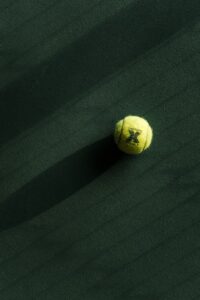The Science Behind Padel Ball Comparison: Materials, Bounce, and Durability
3 min read
The Science Behind Padel Ball Comparison: Materials, Bounce, and Durability
As a padel enthusiast, you know the importance of having the right equipment. Padel is a fast-paced game that requires precision and accuracy, and having the right ball can make all the difference. Padel ball comparison is not just about picking any ball that fits the sport – the quality of the ball and specifically its materials, bounce, and durability can affect your gameplay. In this article, we’ll explore the science behind these three key factors and how it affects your padel game.
Materials: What Makes a Good Padel Ball?
Choosing the right material for your padel ball is crucial as it affects the way the ball behaves when it’s struck. The core of a padel ball is made of rubber or foam, whereas the outer shell can be either natural or synthetic rubber. The best padel balls have a perfect balance between softness and hardness, and the materials used affect this balance significantly.
Foam core balls are softer and lightweight, giving them a lower bounce rate. They are thus preferred by less experienced players who need an easier time hitting the ball. Rubber core padel balls are more suitable for advanced players who require balls with more lively response rates and higher bounce levels.
When it comes to the outer shell, synthetic rubber is tougher than natural rubber, which means that balls made out of synthetic rubber have more durability. Hand-curated balls using the highest quality materials are the best option even though they can be more expensive due to their long-lasting quality.
Bounce: How High Should the Ball Bounce?
The bounce of the padel ball is another crucial factor to consider. The ball should have a consistent bounce allowing for predictable movements on the court. Pad el balls with a low bounce level range around 50-55cm, while high bounce padel balls range between 135-147cm. However, the average bounce for a professional padel player is between 130-135cm.
The ball’s bounce is also dependent on the pressure inside the ball. The lower the pressure, the softer the ball and the lower the bounce rate. An overpressure ball is harder and bounces much higher than in comparison to a ball with less internal pressure. This factor affects the speed of the ball as well.
Durability: How Long Will the Ball Last?
A padel ball’s durability cannot be neglected. Long-lasting balls ensure consistent and stable gameplay. The durability of a ball depends on both the materials that were used during production and how well the ball is maintained.
It’s crucial to remember that a ball’s durability is not indefinite, and regular use causes internal pressure to decrease, rendering the ball useless after a certain point. It is recommended that players rotate their balls after a certain amount of gameplay, preferably after 3 to 4 hours of playtime. This small change will increase the lifespan of the set of balls.
Conclusion:
When it comes to padel ball comparison, there are several factors to consider. The ball’s material is the most important factor of which foam core balls are suitable for beginners, while rubber core balls are better for seasoned players.
A padel ball’s bounce height is dependent on its internal pressure, while durability is vital for maintaining consistent gameplay. Choosing the right padel ball takes time and testing, and can add to your love of this fantastic sport.






